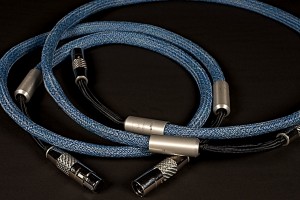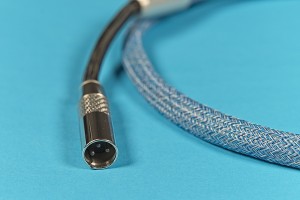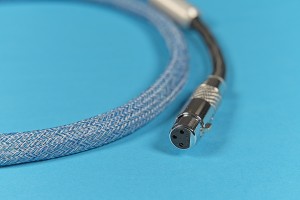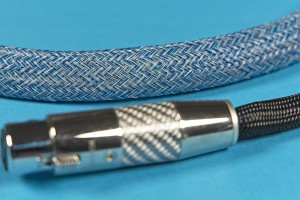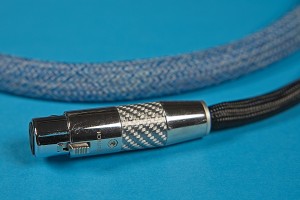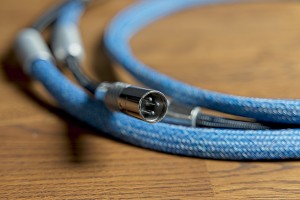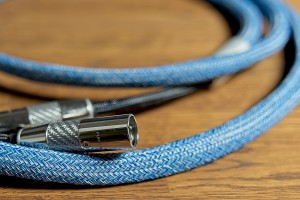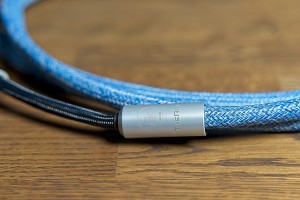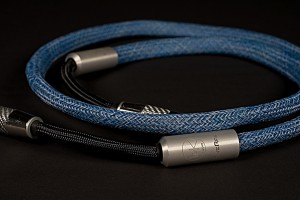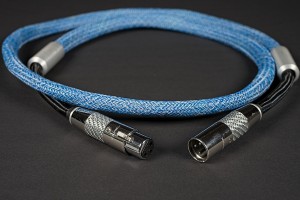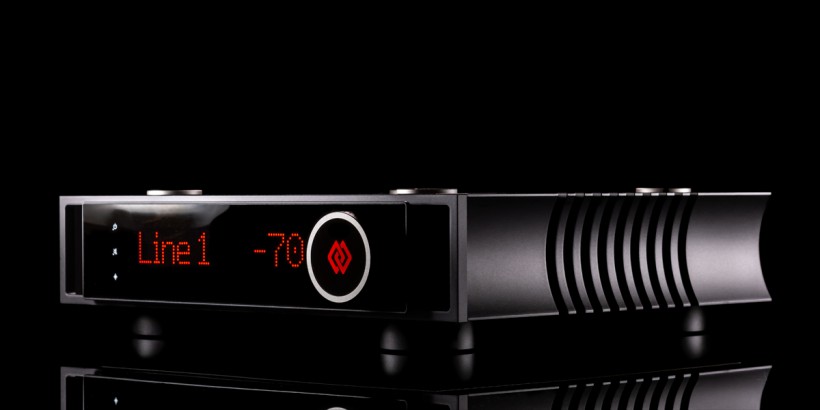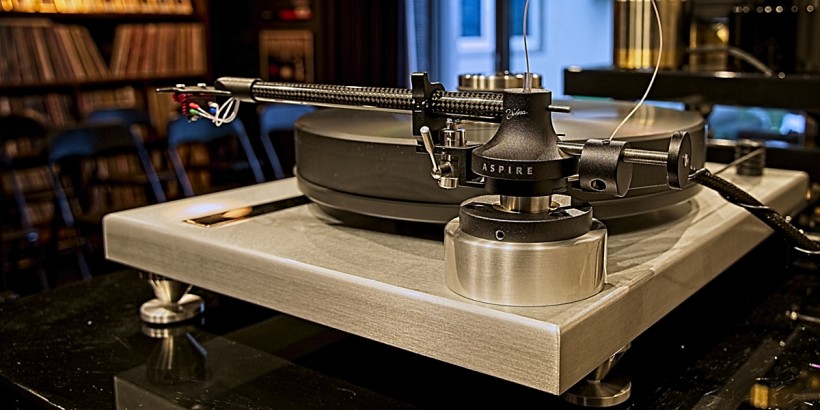WK Audio has been on the market for a few years now. It is a Polish audio cables manufacturer, a brainchild of an architect and music lover, Mr. Witold Kamiński. It’s time for its HiFiKnights debut, and the first product we got for assessment is WK Audio TheRAY XLR IC, the Exclusive version.
Introduction
WK Audio is an audio brand founded by an architect, audiophile, and music lover, Mr. Witold Kamiński. Today, it is known exclusively for its audio cables, but its first product was the PURE anti-vibration platform in 2018. A bit later, during the COVID lockdown, Mr. Kamiński turned his attention to audio cables. The first of, as we know today, many to come was TheRED power chord; later, more types and models followed. Currently, the lineup is divided into three series: the top one, TheRED, the middle one, TheRAY, and finally the entry-level one named TheONE (once, there was also TheAIR). Each of the lines includes power and speaker cables, as well as analog interconnects. Additionally, within the top TheRED series, you can find digital cables as well.
The Polish manufacturer keeps his cards close to the vest, so to speak. He doesn’t brag about the design details, geometry of his cables, or even particular types of conductors. He simply assumes that there is no reason to make it easy for anyone to copy WK Audio solutions. Arriving at the current results cost Mr. Kamiński a lot of time, effort, and probably money, so his reluctance to share his specific findings and developments is understandable. For the record, WK Audio is not alone in this approach, as quite a few companies do so as well. The one that somehow always comes to my mind first is the British Tellurium Q. OK, let’s get to it.
Design and Features
As already explained, WK Audio doesn’t share details of the design of their products. In this case, I didn’t get anything more than what is available at the manufacturer’s website. Which is as follows:
„TheRAY interconnect is an original design, built 100% by hand, using only original solutions and materials. The experience gained during the work on the top TheRED cables was used in the design process of the TheRAY interconnect. Many materials and solutions were also taken over from the TheRED series!
Great emphasis was placed on selecting the optimal cable geometry, matching it to the materials used as conductors. The signal was conducted using pure silver. Silver-plated copper and very high-purity copper were also used to build the cable. This original mixture allows for maximum use of the sound potential of silver, while eliminating the typical symptoms of this material, such as sharpness of the sound, its brightening, and “thinning”.”
Long story short, it seems that in this proprietary, hand-built design manufacturer uses various conductors: silver, copper, and silver-plated copper to combine all the best qualities of each of them while eliminating their downsides. The cable features a nice, light-blue sleeving and is not the most flexible interconnect I’ve ever held in my hands, but flexible enough. I mean, in most cases you won’t have any issues when installing it in your setup, also because the standard length is 1,5 meters.
TheRAY XLR interconnect can be terminated with two different sets of Furutech connectors (and the same goes for the unbalanced RCA IC). The Basic version uses FURUTECH FP-601M R/ FP-602F R, while the Exclusive version features more advanced (and more expensive) FURUTECH CF-601M R NCF / CF-602F R NCF. This practice (offering the same model with two different sets of connectors) seems to also concern other cables in the WK Audio TheRAY series. Furutech, on the other hand, is the preferred brand. As already mentioned, the standard length is 1,5 m, others are available upon order.
A side note
The difference between the plugs is in the NFC technology used in the top Furutech connectors. That’s how the manufacturer explains it:
NCF features a special crystalline material that has two ‘active’ properties. First, it generates negative ions that eliminate static. Second, it converts thermal energy into far infrared. Furutech combines this remarkable material with nano-sized ceramic particles and carbon powder for their additional ‘piezoelectric effect’ damping properties. The resulting Nano Crystal² Formula is the ultimate electrical and mechanical damping material. Created by Furutech, it is found exclusively in Furutech products.
Sound
I used the WK Audio TheRAY XLR to connect LampizatOr Poseidon D/A Converter with my GrandiNote Shinai Class A integrated amplifier for most of the test, and later also between Circle Labs P300 linestage and the same brand’s M200 power amp. My basic reference was the significantly more expensive KBL Sound Himalaya 2 XLR.
It is not my first experience with WK Audio TheRAY, as I already reviewed the speaker cable from this series for Polish readers (see HERE). For our readers, I will soon prepare a comparison of the said speaker cables’ Basic and Exclusive versions. In other words, the adventure with TheRAY won’t stop with the balanced interconnect. For now, though, let’s focus on the XLR IC. The previous experience set my expectations quite high, as the speaker cables even in the Basic version turned out to offer an excellent performance, in some ways outperforming my reference Soyaton Benchmark MK2, in others giving way to the latter. Overall, it’s a very good product that will satisfy many demanding customers, and it’s not crazy expensive. So I expected (at least) more of the same from its XLR IC iteration.
After starting my listening session, the first observation is quite interesting. The speaker cables’ ‘uberfeature’ (in a positive meaning of the word) was the exceptionally high energy of the presentation. It offered lively, powerful, agile, sort of joyful performance. In comparison, TheRay XLR IC seems calmer, or, if it were a person, very confident, steady, and focused on its job. The job is, obviously, to convey whatever the source of the signal delivers. Hence, the first thought I write down is: the IC and SC may fit together really well, as they should perfectly complement each other. I’ll get back to it later, as I plan to test this assumption.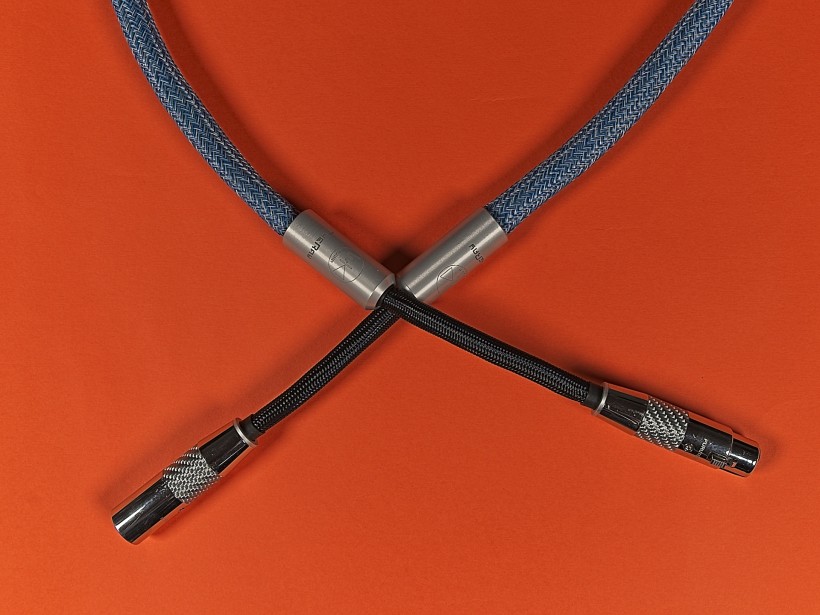 Listening to Chick Corea, Christian McBride & Brian Blade from „Trilogy 3”, it seems that the midrange is a somewhat favored part of the range. It is rich, a touch warm, and strongly saturated, while the upper and lower parts seem slightly withdrawn. Yet, when the next album starts, with Miles Davis, his trumpet beautifully shines, it’s smooth and gentle when it needs to be, but almost piercing, almost (!) bright when that’s the maestro’s intention. Also, when the drums playing gets intense, the cymbals start to show their metal provenance, offering lively, momentarily sparking sound nicely resonating with my expectations.
Listening to Chick Corea, Christian McBride & Brian Blade from „Trilogy 3”, it seems that the midrange is a somewhat favored part of the range. It is rich, a touch warm, and strongly saturated, while the upper and lower parts seem slightly withdrawn. Yet, when the next album starts, with Miles Davis, his trumpet beautifully shines, it’s smooth and gentle when it needs to be, but almost piercing, almost (!) bright when that’s the maestro’s intention. Also, when the drums playing gets intense, the cymbals start to show their metal provenance, offering lively, momentarily sparking sound nicely resonating with my expectations.
There is no sign of any sort of withdrawal of the upper part of the range anymore, nor is there any artificial harshness or brightness in it. It does come off on the smoother side of things, but whenever needed, it shows the crisp and shiny character of metal elements. It shows me that while WK Audio TheRAY XLR, same as all other cables, has some sort of sonic character, it does not superimpose it over the presentation but lets the recordings have a final say in it, so to speak. TheRAY’s main job, again, seems to be ‘only’ to convey what the source provides without adding or subtracting anything from it.
Moving on to Ahmad Jamal’s „We Live in a Jazz World”, I can hear both the rich texture and tone of his piano and his fluid way of playing. In the upper part of the band, the crisp sounds of cymbals is what attracts my attention as if in opposition to the slightly mellow piano. The lower part of the band with tight, fast, springy drums is very well differentiated, and, as a result, the pace, rhythm, and timing (or PRAT) are presented on point. With TheRAY XLR, it all comes together smoothly and effortlessly into a beautifully coherent, natural-sounding whole.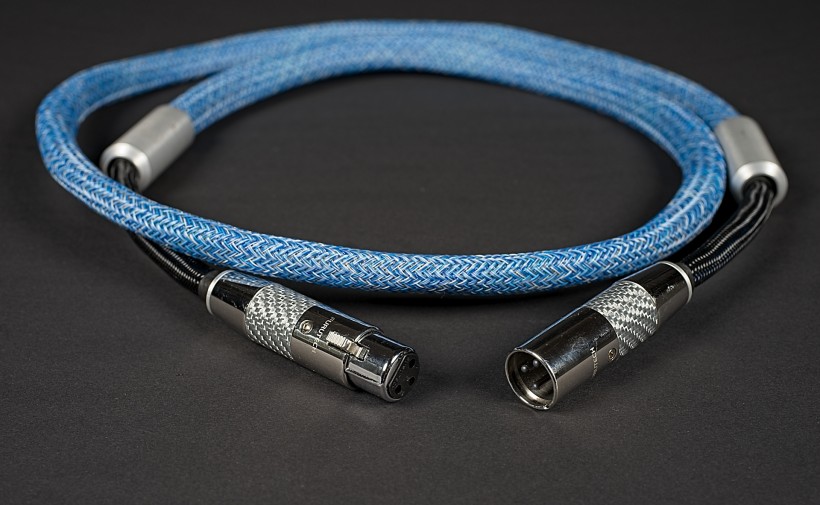 The midrange with the tested balanced interconnect is naturally warm, which gives the music a very good flow, and proper richness, and the musicians in this live recording impose quite a presence on the stage. They stay beyond the line connecting the speakers, and yet it feels as if they were quite close to me, as if I were sitting in the first row right next to the stage. One of the qualities behind it is the aforementioned high energy, or a transfer of energy, to be specific. It is not as impressive as with the speaker cable, but it is still very good. It is less spontaneous and more organized, hence the impression of a calmer delivery. The energy of music, combined with other features, is what creates the presence of the musicians.
The midrange with the tested balanced interconnect is naturally warm, which gives the music a very good flow, and proper richness, and the musicians in this live recording impose quite a presence on the stage. They stay beyond the line connecting the speakers, and yet it feels as if they were quite close to me, as if I were sitting in the first row right next to the stage. One of the qualities behind it is the aforementioned high energy, or a transfer of energy, to be specific. It is not as impressive as with the speaker cable, but it is still very good. It is less spontaneous and more organized, hence the impression of a calmer delivery. The energy of music, combined with other features, is what creates the presence of the musicians.
The soundstage with its impressive depth, clearly defined layers, and large phantom images, each with its specific coordinates putting them well anchored in a certain spot on the stage, and the lively, convincingly delivered response from the audience, all these elements add to the feeling of participation in the event rather than just listening to the recording. It may be a touch calmer presentation that I am used to, it is not as ‘electric’, but it is still hard not to get immersed in the music and the performance.
I reach for Nagra’s „Audiophile Analog Collection vol.3” because, as much as I don’t like compilations like this one, it does include top-quality recordings, and most of the music is truly good. Listening to, for example, „Improvisation”, I am impressed with the abundance of information included in this, seemingly, simple track. Not just regarding the tone and texture of each instrument, but the air surrounding them, the sustain, the reverb – the latter intensifies the feeling of staring into a large space in front of me, where the sound can fully ‘develop’ and ultimately die out. But it’s this feeling of effortlessness and openness of the sound that is so live-like that it brings a smile to my face.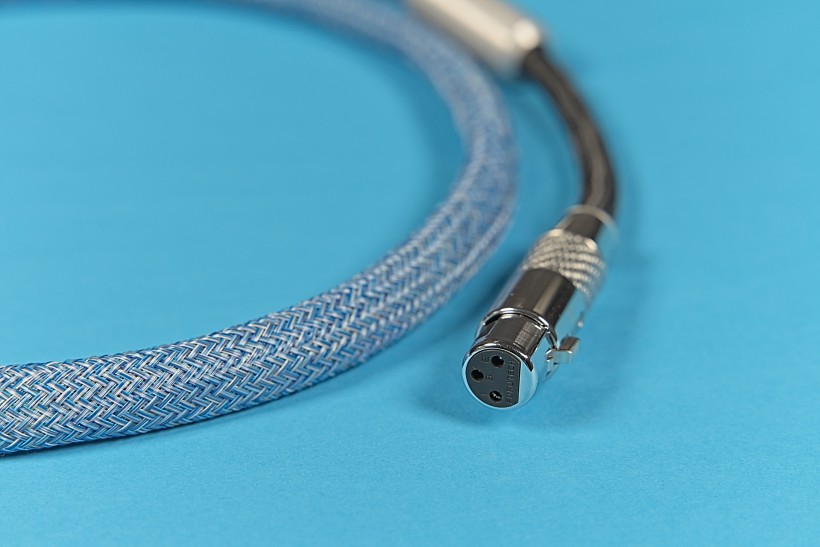 Next tracks bring excellent double bass performances, and I can finally appreciate how deep the bass extends with TheRAY. And while it goes down really deep, it makes sure that even the lowest sounds are properly formed, round, but not too round, when needed taut, but not too taut (double bass with its huge wooden body is never super-tight), colorful, but not colored. Again, each string pluck and the instrument’s body response (or reinforcement, if you will) have proper weight, are rich, and the good differentiation allows me to fully enjoy the wealth of this powerful instrument’s sound.
Next tracks bring excellent double bass performances, and I can finally appreciate how deep the bass extends with TheRAY. And while it goes down really deep, it makes sure that even the lowest sounds are properly formed, round, but not too round, when needed taut, but not too taut (double bass with its huge wooden body is never super-tight), colorful, but not colored. Again, each string pluck and the instrument’s body response (or reinforcement, if you will) have proper weight, are rich, and the good differentiation allows me to fully enjoy the wealth of this powerful instrument’s sound.
„Toccata” by L. Boellmann played (obviously) on pipe organ shows me that the tested cable allows sound to go even deeper, delivering a huge, in terms of scale, and visceral sound I could feel in my bones. Moments later, a violin in Bach’s „Sonata No. 1 in G Minor” melts my heart with its beautifully rendered, sweet sound. Whether deep down in the bass region or in the upper midrange, TheRAY XLR delivers a very natural sound throughout the band, one that reminds me strongly of live experiences. The latter, for me, are the ultimate reference, which means that my appreciation of the test’s subject only keeps growing.
Sure, when listening to this reference album I can hear that my Himalaya’s resolution is a touch better, the sound with it is even more refined, and the balance between warmth or natural sound and what is considered neutral tonal balance is even better (because, in fact, on the high end level it is about the balance between the two, not offering one or the other), but the differences are not that big, surely not what the price difference suggests. One should also consider that TheRAY is not the top model in WK Audio’s lineup (neither is the Himalaya II), and it is TheRED that’s priced more adequately and should be compared directly to my cable. To check how TheRAY deals with a more dynamic, ‘fun’ music, first, I play the „Patáx Plays Michael (A Tribute)” album. If you have any doubts, Michael in the title is Jackson, and the band delivers a truly exciting take on many of his hits. The tested cable makes sure to present the full dynamic range, to infuse the performance with a lot of energy, and to deliver it with an exemplary PRAT (pace, rhythm, and timing). The vocals, very Michael-style-like, sound so natural, so smooth and powerful at the same time, clearly indicating that a natural, convincing midrange presentation is one of the key qualities of TheRAY. I love how authentic the flamenco-style feet stamping comes off, too, and how fast and powerful it is.
To check how TheRAY deals with a more dynamic, ‘fun’ music, first, I play the „Patáx Plays Michael (A Tribute)” album. If you have any doubts, Michael in the title is Jackson, and the band delivers a truly exciting take on many of his hits. The tested cable makes sure to present the full dynamic range, to infuse the performance with a lot of energy, and to deliver it with an exemplary PRAT (pace, rhythm, and timing). The vocals, very Michael-style-like, sound so natural, so smooth and powerful at the same time, clearly indicating that a natural, convincing midrange presentation is one of the key qualities of TheRAY. I love how authentic the flamenco-style feet stamping comes off, too, and how fast and powerful it is.
When, at some point, the brass instruments join the party, the performance gets even livelier, with more sparkling top, with additional energy in the upper part of the band. Again, when required, the overall rather smooth-sounding TheRAY allows these instruments to sound a bit bright, even piercing at times. There are a lot of details in their sound, and quite a good separation that combined allows me to follow any of them at will without breaking up the great harmony between them. That’s what I call a truly natural sound, and that’s what I expect from any good audio component. Ultimately, instead of listening to one or two tracks, I let the album play till the very end. Listening to it delivered in such a lively and natural way is just too much fun to stop before it ends.
As already suggested, and also recommended by Mr. Kamiński, despite having only a brand new TheRAY speaker cable (Exclusive version) at my disposal, I finally replace my reference Soyaton with it to check whether I could detect any synergy between IC and SC from the same line. What (let me emphasize once more – brand new) TheRAY speaker cable adds to the sound is somewhat expected. Namely, it adds even more punch to the bass, particularly its lower part, which is also even better saturated. Since it’s richer now, bass gets a touch rounder, but it’s a micro-change that, without a direct comparison, I wouldn’t even notice.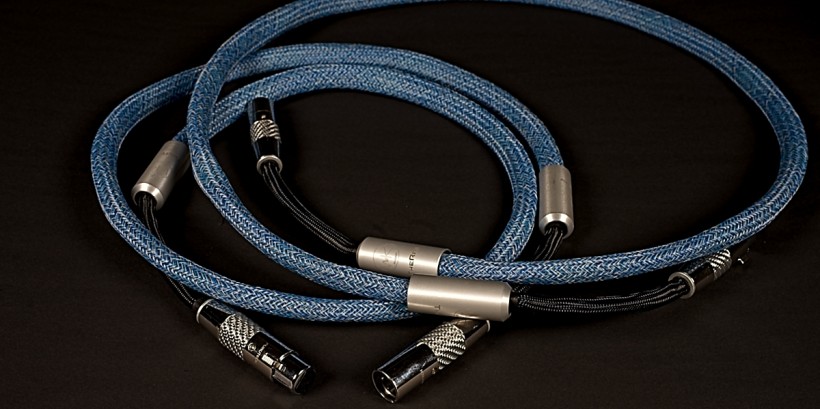 On the other hand, the space, which with Soyaton (it is its inherent quality that I love) is exceptional, now gets less so. It’s still good, just not quite as good. As I said, it was to be expected, as that’s what happens with almost any (even very good) speaker cables replacing Benchmark Mk2. The sound with both WK Audio cables in the system is more energetic, more agile, which confirms my observations described in the SC’s Basic version review I’ve mentioned before. It seems that it is the SC that brings the energy and ultimate punch to the table, and the IC that takes care of the rich, colorful, open midrange, and crisp, vibrant, vivid treble. Unless the SC can deliver similar performance in the upper part of the band as well, when fully broken in. I’ll let you know, because when it happens, I will write another test for you comparing the qualities of the Basic and Exclusive speaker cable versions.
On the other hand, the space, which with Soyaton (it is its inherent quality that I love) is exceptional, now gets less so. It’s still good, just not quite as good. As I said, it was to be expected, as that’s what happens with almost any (even very good) speaker cables replacing Benchmark Mk2. The sound with both WK Audio cables in the system is more energetic, more agile, which confirms my observations described in the SC’s Basic version review I’ve mentioned before. It seems that it is the SC that brings the energy and ultimate punch to the table, and the IC that takes care of the rich, colorful, open midrange, and crisp, vibrant, vivid treble. Unless the SC can deliver similar performance in the upper part of the band as well, when fully broken in. I’ll let you know, because when it happens, I will write another test for you comparing the qualities of the Basic and Exclusive speaker cable versions.
Summary
WK AUDIO TheRAY XLR IC represents the mid-level of this brand’s lineup, which is also reflected by its price. Yet, as I see it, it delivers more than expected at this price point, and there seems to be a synergy with its speaker cable sibling. It offers a very good (even if not ultimate) resolution, excellent PRAT, the bass goes deep, is rich and colorful, and yet it is tight enough for any music. The treble, while it may seem on a bit calmer side, is very open, vivid, and can get a bit bright and piercing when needed (like for brass instruments, for example).
Importantly, both band’s extremes support the natural, slightly warm, rich, detailed midrange, ultimately delivering an engaging, very musical performance for those who look for a live-like, spatial, immersive experience. That’s a cable for long, joyful listening sessions, rather than making a huge first impression within a few minutes. It is a classy, refined performer that in many systems will be the only one you need. Give it a chance, and your search for a balanced interconnect may be over even if you’re ready to spend significantly more on it.
Prices (when reviewed); Europe & USA only:
- WK AUDIO TheRAY XLR Basic (Furutech FP-601M R/ FP-602F R): 3 000 € /1,5m
- WK Audio TheRAY XLR Exclusive (Furutech CF-601M R NCF / CF-602F R NCF): 3 300 € /1,5m
Manufacturer: WK AUDIO
Associated equipment:
- Digital source: a custom passive server with WIN10, Roon, Fidelizer Pro 7.10, JCAT NET XE, and JCAT USB XE cards with FERRUM HYPSOS Signature power supply, KECES P8 (mono) linear power supply for the server, JCAT USB Isolator
- D/A Converter: LampizatOr Pacific 2 +Ideon Audio 3R Master Time (USB signal regenerator)
- Analog front end: J.Sikora Standard MAX turntable, J.Sikora KV12 & J.Sikora KV12 MAX tonearms, AirTight PC-3, Audio Technica PTG33 Prestige & LE SON LS10 MKII cartridges, Grandinote Celio MK IV & ESE Lab Nibiru V 5 phono stages.
- Power amplifiers: GrandiNote Shinai, Circle Labs M200, Art Audio Symphony II (modified)
- Preamplifier: Circle Labs P300
- Loudspeakers: GrandiNote MACH4, Ubiq Audio Model ONE Duelund Edition.
- Interconnects: Bastanis Imperial x2, Soyaton Benchmark, Hijiri Million, Hijiri HCI-20, TelluriumQ Ultra Black, KBL Sound Himalaya 2 XLR, David Laboga Expression Emerald USB, David Laboga Digital Sound Wave Sapphire Ethernet
- Speaker cables: Soyaton Benchmark Mk2
- Power cables: DL Custom Audio 3D-S-AC Connect, LessLoss DFPC Signature, Gigawatt LC-3
- Power: Gigawatt PF-2 MK2 and Gigawatt PC-3 SE Evo+; a custom power line with Gigawatt LC-Y in-wall cable; Gigawatt G-044 Schuko and Furutech FT-SWS-D (R)
- Network: Silent Angel Bonn N8 + Silent Angel Forester F1 + optical LAN isolator
- Racks: Base VI, Rogoz Audio 3RP3/BBS
- Anti-vibration accessories: ROGOZ-AUDIO SMO40 and CPPB16 platforms and ROGOZ AUDIO BW40MKII feet, OMEX Symphony 3S, Franc Accessories Ceramic Disc Slim Feet and Wood Block Platform, Graphite Audio CIS-35 and IC-35 Premium



